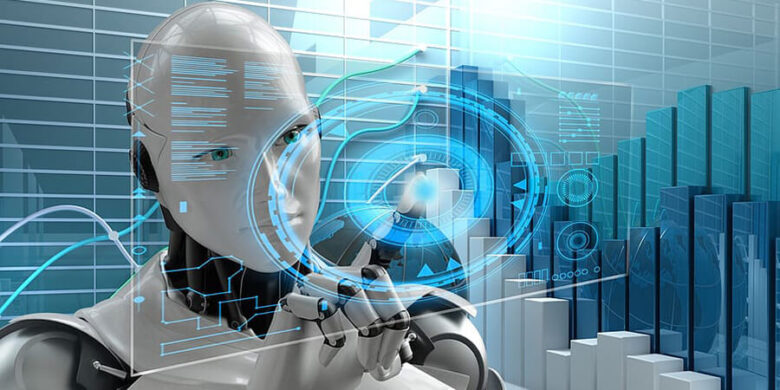The robotics industry is transforming rapidly, from science fiction to the heart of our modern industries and everyday life. Robots are becoming increasingly autonomous, intelligent, and integrated in our society as artificial intelligence and machine learning advance. This shift in technology creates new challenges and opportunities across all sectors. Understanding this technological shift is vital for predicting the future of industry, work, and ethics.
The History of Robotics
Robotics has been a part of human culture for centuries. However, its practical application is relatively new. In the mid-20th century, the first industrial robot, Unimate, was introduced. It began working on an assembly line at General Motors in 1961. Early robots were programmed to do repetitive tasks such as welding and lifting heavy material. They were designed solely for efficiency and to replace dangerous human jobs. This period laid the foundations for robotics to become a valuable and viable tool in industrial manufacturing.
Current Applications Across Industries
Robotics is now used in many other fields than the factory floor. Robots have become a vital part of many fields. They perform complex and delicate jobs. In the healthcare industry, robots such as the da Vinci system help surgeons perform minimally invasive surgeries with greater precision and control. In logistics and online commerce, autonomous mobile robots (AMRs) navigate huge warehouses in order to sort and transport packages, allowing companies like Amazon to fulfill orders with incredible speed. Robots are also used in agriculture. Automated systems can be used to plant seeds, monitor crop health, and harvest the produce. This helps address labor shortages while increasing food production.
The Impact on the Labor Market
Robotics’ increasing presence in the workplace has led to a debate about the future of human work. Automation has undoubtedly displaced jobs that require repetitive, manual, and routine tasks. Particularly vulnerable are assembly line workers, data entry clerks, and certain administrative roles. This shift also creates new roles that require different skills. Robotics engineers, AI experts, and maintenance techs who can program and maintain these advanced systems are in high demand. This transition calls for a fundamentally new approach to education and training. Skills like creativity, critical thinking, and digital literacy are essential in preparing people for jobs of the future.
How to Navigate Ethical Considerations
As robots become increasingly autonomous, we encounter intricate ethical dilemmas that necessitate meticulous deliberation. Accountability is one of the most pressing questions. Who is accountable if a self-driving car causes an accident or a robotic surgeon makes a mistake? Who is responsible? Is it an owner, a manufacturer, or a programmer? Robots with cameras and sensors collect a lot of data, which is a concern. It is important to establish clear ethical and regulatory frameworks in order to ensure that robot technologies are developed responsibly without compromising safety, privacy, or values.
Future Trends of Robotics
Artificial intelligence and soft robots will continue to advance, allowing robotics to become more integrated with our lives. Next-generation robots will work in shared space with humans. These “cobots,” which are safe, intuitive, and easy to program, make automation available to small businesses. Soft robotics is also making progress. It uses flexible materials in order to create robots that can adapt and move more like living organisms. This approach could lead medical devices and wearable technologies to make breakthroughs. As AI capabilities increase, robots become more capable of learning from their surroundings and making real-time decisions, opening possibilities we have only begun to imagine.
Shaping our Robotic Future
Robotics’ rise is more than a trend. It’s a force that transforms industries, economies, and societies. Robots have evolved from simple machines in factories to sophisticated partners who work in complex fields. They are pushing the limits of what’s possible. Their expansion poses challenges in terms of employment and ethics but also presents immense opportunities for innovation and progress. It is important to plan ahead. This means investing in education, creating thoughtful regulations, and encouraging a public dialog.
FAQs
1. What is the difference between automation and robots?
Automation is the broad term used to describe technology that allows for a process or task to be completed with little human involvement. Robotics, a subfield of automation, is the design, construction, and operation of robots for performing tasks. Robots are part of automation, but not all automation is robot-based.
2. What is the relationship between AI and robotics?
Artificial intelligence is the “brain,” which allows robots to learn, perceive their environment, and make decisions. Early robots were designed to perform specific, repetitive tasks. Modern AI-powered robotics are able to adapt to changing circumstances, allowing them greater versatility and autonomy.
3. What industries are the most affected by robots?
Robotics has had the greatest impact on manufacturing, logistics, and healthcare. Robotics has also made its way into the agriculture, construction, and service industries through robots that interact with customers in retail and hospitality.



